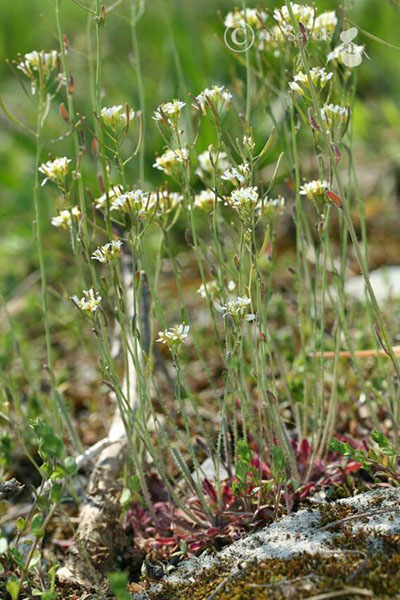Researchers are learning more about how plants respond to "alarm signals" released by other plants that are under attack by herbivores. To warn conspecifics about predators, many animals issue alarms by vocalizing or emitting odors. In the case of plants, warnings come in the form of volatile organic compounds emitted when an herbivore causes damage to a plant by eating a portion of the plant. Prior research has established that nearby plants can detect these volatiles and subsequently activate herbivore defense systems. Those systems produce chemicals that protect the warned plants from potential predators. A new study based on experiments involving the model organism Arabidopsis thaliana, commonly known as thale cress, has now shed light on the poorly understood mechanisms underlying this defense activation. The study shows that the volatiles induce specific epigenetic changes in the plant, meaning changes in the levels of genes that are expressed, or "switched on," due to an external environmental influence. The findings could help agriculturalists devise ways to boost plant's natural herbivory resistance and thus reduce farmers’ use of pesticides. See also: Agricultural science (plant); Agriculture; Epigenetics; Pesticide; Plant-animal interactions; Plant communication; Volatilization

Researchers at the Tokyo University of Science exposed A. thaliana to β-ocimene, a volatile commonly released by plants as an alarm signal. The reception of this signal led to increased levels of histone modification in the plant, changing the small proteins responsible for packaging the plant’s genetic material (DNA). These modifications allowed for an increase in the rates of transcription—the process of making RNA copies—of genes known to be involved in girding plants against herbivorous attacks. See also: Deoxyribonucleic acid (DNA); Histone; Transcription
Two of the genes with enriched transcription levels were ethylene response factor genes, or ERFs, designated ERF8 and ERF104. The products of these genes are transcription factors, which are proteins that control the rate of transcription of other genes. These transcription factors appeared in higher concentrations in A. thaliana leaves, which in turn prompted the production of certain acids that made the leaves less palatable to herbivores. The researchers demonstrated this effect by documenting how insect predators—specifically larvae (caterpillars) of Spodoptera litura, commonly known as tobacco cutworms—avoided A. thaliana plants that had been in proximity to plants previously eaten by S. litura larvae. The study further showed that the enhanced defense ability of A. thaliana persisted for a period of five days after initial β-ocimene exposure. However, by the tenth day post-exposure, all alerted plants had returned to their regular state with reductions in ERFs. The researchers propose that achieving a better understanding of molecular mechanisms involved in ramping up natural herbivory defense in plants will lead to more sustainable agricultural practices. See also: Ethylene (plant physiology); Farm crops; Gene; Insecta; Lepidoptera; Predator-prey interactions; Sustainability





